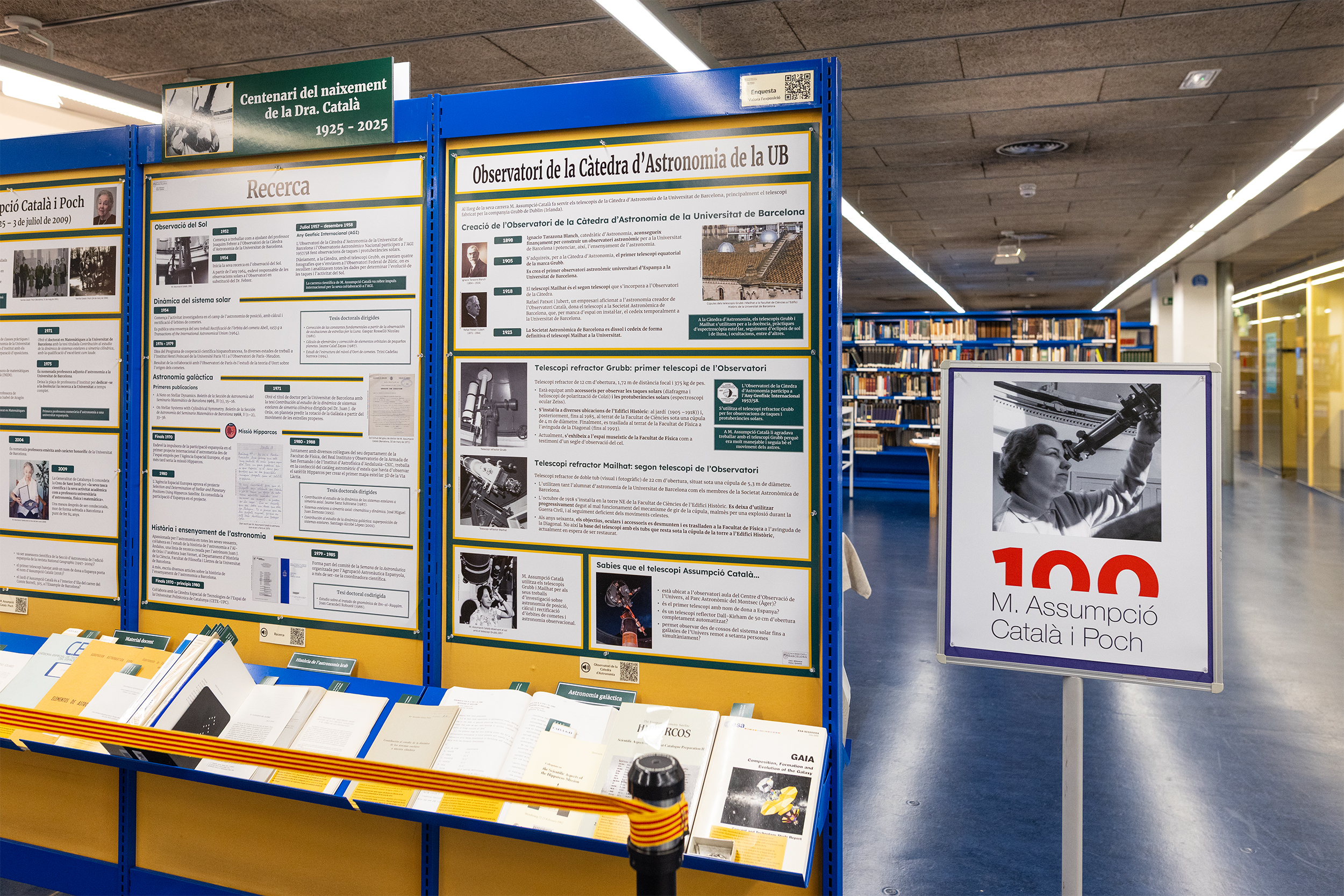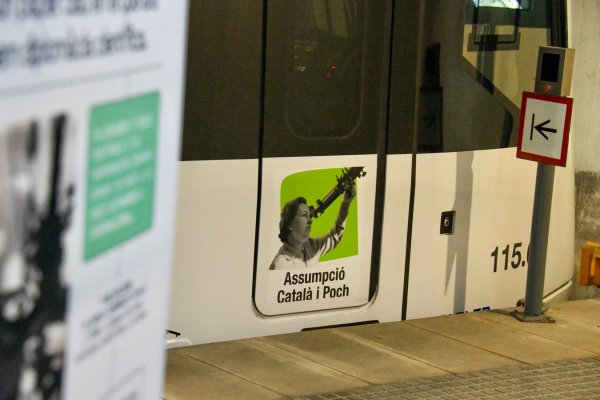Three exhibitions opened today at the Faculty of Physics of the University of Barcelona, paying tribute to Assumpció Català y Poch, who was a professor of Mathematics and Astronomy at the UB and the first female professor of astronomy in Spain. The event was attended by the UB vice-rector for Culture, Heritage and Memory, Agustí Alcoberro; the dean of the Faculty, Eugeni Graugés; the director of the UB’s Department of Quantum Physics and Astrophysics, Montserrat Guilleumas; and the director of the Catalan Women’s Institute, Alba García.

This initiative is part of the commemoration of the centenary of the scientist’s birth, which began in February with an event at the Historic Building, and counts with the support of the Institute of Cosmos Sciences of the University of Barcelona (ICCUB), the CRAI Library of Physics and Chemistry of the UB, the Vicerectory of Culture, Heritage and Memory of the UB and the UB Physics Faculty.
The three exhibitions explore different facets of Assumpció Català’s life and professional career. The virtual exhibition “Assumpció Català i la Universitat de Barcelona. Una trajectòria pionera en el món universitari i científic”, curated by Dolores Pulido and Maria Murillo, presents Català’s educational journey, from her beginnings as a university student (she was one of the first women to graduate with a degree in science, in 1952) to becoming the first woman to obtain a doctorate in mathematics.
In addition, the M. Asunció Català Poch Collection from the CRAI Library at Physics and Chemistry is also on display, curated by Eduard Masana, Trini Cadefau, Sabina Panadero, and Aurora Aguilera. Documents related to Català’s professional career, donated to the CRAI by the Department of Quantum Physics and Astrophysics donated in 2023, are on display. Most of the collection consists of scientific research and university teaching materials, as well as documentation relating to her involvement in various scientific societies. Català played a key role in training and supporting new generations of astronomers at the UB and made a significant contribution to the European Space Agency’s Hipparcos project (1989 - 1993).

Finally, there is also a collection of historical astronomical instruments, curated by Joan Manel Hernández, Trini Cadefau and Anna Argudo, which is part of the Faculty of Physics’ collection of scientific instruments. Noteworthy pieces include the eyepiece of the Grubb telescope, with which Català began studying solar activity in 1954, and the Zeiss spectroscope, with which she kept a daily record of sunspots and protuberances during the International Geophysical Year (1957). This exhibition was created with the specific support of the ICCUB.




